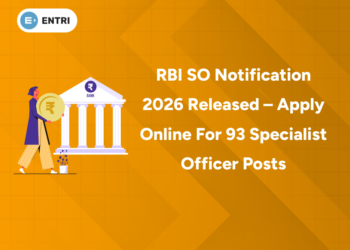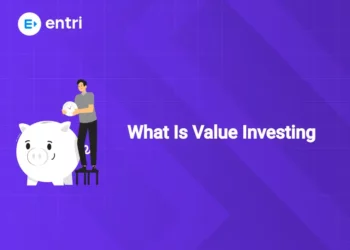Table of Contents
Java technology does not require an introduction. Everyone around the world is still amazed at the astonishing power of Java in web and mobile development. Of course, you too may be tempted by Java’s popularity and monopoly in software development, and you may want to use Java programming language with your next web development solution.
Learn to code from industry experts! Enroll here!
Java lets you process complex applications’ solutions like tally voting polls, flight booking APIs, hotel booking, reservation systems, and more. However, you would not know what Java technologies you need to develop a complex or simple web application?
There is a wide range of technologies under the term Java that describe web development in various ways. In this section, we have discussed about Java technologies that can used to build a web application. Whether you are a full-stack developer, a back-end or front-end developer, or a business owner, knowledge of these technologies is essential to understanding the flow of your application.
Installation of technologies to use Java
We need to ensure that these technologies are installed on your system to use Java. Additionally, the server must have a built-in container or web server that can detect and run the classes you create.
- Java Servlet API
Java Servlet is Java’s first-ever server-side web technology that enables you to define HTTP-specific classes. The servlet class expands the power and capability of the servers and hosts the application. These applications can be accessed with the request-response editing model.
Although a servlet can respond to any request, the main purpose of using a servlet is to extend applications hosted by web servers. For example, you can use servlets to get data input from an online application or even extend it to appear on the screen or an HTML page. Additionally, you can use the servlet to write data to a database or file. The servlet works on the server-side with no application GUI or HTML.
- Java Server Pages Technology
Java Server Pages (JSP) technology is very popular among developers and provides an easy and fast way to improve dynamic web content. It leads to the rapid development of web platforms and standalone web applications. Additionally, you can add a snippet of servlet code to the text document of the app, making JSP friendly to the developer. Also, JSP pages are text-based documents that include two types of text:
Static Data that can be expressed in any text format, including XML, HTML, or WML. JSP Technology fully determines dynamic content creation on a web page.
Learn to code from industry experts! Enroll here!
The packages used for JSP page building are javax.servlet.jsp, javax.el, javax.servlet.jsp.tagexta, and javax.servlet.jsp.el. However, you will need to import them directly. With JSP, it can be very easy to create a web application with snipped JSP code and extensions.
You can develop a website with JSP technology pages by using single captions and inserting them into the header.html file that describes site navigation. To make changes to buttons or links, you need to make changes to one file, and it will be automatically redirected all over the site.
Because of this, the Java program development company claims that JSP is the best technology for creating powerful web contents such as forms, surveys, and more.
JavaServer Pages Standard Tag Library
The JavaServer Pages Standard Tag Library (JSTL) integrates core functionality common to many JSP-based applications. Instead of mixing tags from multiple vendors in your applications, you are using one common set of tags. This configuration allows you to run your applications on any JSP container that supports JSTL and makes it more likely that the tag implementation will be improved.
JSTL has duplicate tags and conditional tags to control flow controls, XML document deciphering tags, global tags, website access tags using SQL, and commonly used function tags. The packages you can access using JSTL are javax.servlet.jsp.jstl.core, javax.servlet.jsp.jstl.fmt, javax.servlet.jsp.jstl.sql, and javax.servlet.jsp.jstl. tlv.
- JavaServer Faces Technology
JavaServer Faces Technology (JSF) is a UI framework that allows you to create web applications. The GUI component framework is one of the main components of JavaServer Faces technology that renders the components in a variety of mark-up languages and other technologies. It also has RenderKit for creating HTML mark-ups. Java APIs and XML configuration files enable this functionality. In addition, its GUI drag and drop tools in Sun Java Studio Creator IDE help to use technology without writing or understanding parts of the code.
- JDBC API
The Java Database Connectivity (JDBC) API is very popular, and most developers understand how important JDBC is for web application development as it allows you to request SQL database commands within Java applications. Additionally, there are no special restrictions involved, as you can request JDBC API in servlet, JSP pages, or enterprise beans. JDBC comprises two components, one application-level interface and another service provider interface. An application-level interface is used to access the database through application components, and the server provider integrates the JDBC driver into the Java enterprise platform.
- Java Message Service API
You already know the importance of sending messages, whether between people or parts of software or applications. Throughout the software program, the messaging system is peer-to-peer-centric. In short, the messaging client sends a message to the recipient client and receives messages from other clients.
To know more about Java, Download Entri App!
In this, each client connects to a message agent that assists in creating, sending, receiving, and reading the message. The Java Messaging Service API is a Java technology platform that solves the problem of communication between clients and achieves its purpose. Enterprise messaging offers a flexible, reliable way of data exchange throughout the business. The JMS API extends this functionality and adds to the provider framework to provide the development of portable messaging applications in the Java language. Additionally, how you will be using the JMS is a matter of perception. One way is to use it to maintain innovative monitoring.
- Java API for XML processing
XML (Extensible Markup Language) processing is an important process in Java web development. The Java API for XML Processing (JAXP) supports it using the Document Object Model (DOM), the Simple API for XML (SAX), and XSLT API (Extensible Stylesheet Language Transformation). JAXP provides application analysis and conversion of XML documents without any XML processing functionality.
It also provides namespace support that allows your application to work with conflicting word schemes. It is highly customizable, allows you to use XML and XSL compliant processors in your application, and supports the W3C schema.
- Java Naming and Directory Interface (JNDI)
As the name elevates itself, it provides naming and directory features, enabling apps to access multiple naming services and directory services. In addition, it provides applications with methods that can perform common directory operations such as object search, attribute association, and more. In addition, using the JNDI, various types of named Java technology objects can be stored and retrieved, allowing applications to co-exist with many legacy applications and systems. Access to the JNDI naming environment is provided by Naming services to application clients, web components, and enterprise beans.
Additionally, developers can customize the components using a naming environment without changing or accessing the source code of the component.
- Java Persistence API
The Java Persistence API (JPA) uses an object-relational mapping to link an object-oriented model to a database. Relational data in Java applications can be easily managed with Java Persistence. It helps to store or retrieve large amounts of data from the database on a continuous basis.
You do not have to use excess of codes, proprietary frameworks, etc. In order to connect to the site, JPA will provide you with an easy way to communicate with the site using an object relational approach. JPA is a collection of effective classes and methods that can connect you to a database.
- JavaMail API and the JavaBeans Activation Framework
Web applications can use the JavaMail API to send email notifications. The API consists of two parts: the application-level interface used by the program components to send an email and the service provider’s interface. Service providers use some email protocols, such as SMTP (Simple Mail Transfer Protocol). Several service providers are included with the JavaMail API package, and some are available separately. The Java EE forum includes a JavaMail extension with a service provider that allows parts of the application to send email.
By integrating with the JavaMail extension, you can use the JavaBeans Activation Framework (JAF) API. This API provides standard services to determine the type of incorrect data, compile access to it, locate the services available to it, and create an appropriate component based on the creation of a JavaBeans component (JavaBeans component) to perform those tasks.
Other Java Technologies
1: What is the default value of a boolean in Java?
You might want to consider using the following other technologies in your web application, depending on the application’s complexity:
- J2EE Connector Architecture:Tool vendors and system integrators use this platform to create service adapters that support access to business information systems that can be linked to any product based on Java EE technology.
- Java Authentication and Authorization Service (JAAS): JAAS provides an application based on Java EE technology to authenticate and authorize a specific user or group of users to implement it.
- Java API for XML Registries (JAXR): JAXR allows you to access business registrations and general purposes on the web.
- Java Architecture for XML Binding (JAXB): JAXB provides an easy way to integrate XML schema into a representation in applications written in Java programming language.
- SOAP with Attachments API for Java (SAAJ): SAAJ is a low-level API on which JAX-WS and JAXR rely.
- Java Transaction API (JTA): JTA provides a standard visual interface for designing tasks.
- Java Beans: JavaBeans classes combine several elements into one component known as a bean. JavaBean is a class that should be serializable, have a no argument constructor, and should also provide methods for setting or acquiring property values.
- Net Beans IDE: NetBeans is an open source, free integrated development platform for web, mobile or desktop applications using Java. It provides complete integrated support for the development cycle namely from creation to profiling, error correction and deployment.
Explore Free Coding Courses !
Take your first step toward mastering in-demand skills, acing interviews, and securing top-tier jobs with Entri's free coding courses.
👉 Explore Free Courses NowCurrent Trends in Java Technology
Although Java has been around for the past quarter of a century, there are new Java development trends emerging every day.
Employing these trends within your next Java project will ensure that you’re staying up to date with the modern consumer. If you’re ready to see what your business can do with the latest trends in Java technology, stay tuned!
DevOps
DevOps, or developer operations, is the union of software development and information technology (IT) teams.
While developers are usually concerned with creating, testing, and packaging software, IT staff are tasked with configuring and maintaining software. DevOps teams are familiar with every part of the application lifecycle. This familiarity ultimately increases the velocity at which teams deliver software.
Git
Just about every developer you meet will know what GitHub is, but few have mastered Git, the command-line version control system that warrants a bit more expertise. GitHub is its web-based counterpart and is plenty useful. But any developer who can wield Git with some confidence will look like a wizard from afar.
Naturally, Git isn’t exclusively a Java technology, but it’s still worth mentioning if you’re an advocate of lifelong learning in all things software development.
Big Data
Back-end engineers are well-acquainted with the concept of data management. But big data requires some extra attention. Big data refers to large and complex data sets and the methods data engineers must use to deal with them.
It’s quite literally in a league of its own. And few programming languages, like that of Java and Python, can handle the brunt of its weight.
Remote Access Solutions
With the COVID-19 pandemic drastically shifting how and where workers get their work done, there’s no better time than the present to make use of Java. Given Java’s security features and its unique back-end capabilities, enterprise-scale solutions using the Java language fare extremely well.
Building a desktop application providing remote access solutions for work-from-home users is a great way to take advantage of Java.
Serverless Architecture
Serverless architecture or serverless computing describes an application that runs without you having to manage the infrastructure of a physical server.
Cloud technology has been on top of radars year after year. This year is no different.
Thankfully, this present-day development trend and Java technology go hand-in-hand. There are numerous tools for cloud development in Java, including Oracle Java Cloud Service, AWS SDK for Java, and Google App Engine.
Spring Framework
Spring Framework is a lightweight, easy-to-deploy Java technology that any decent Java developer should already have in their arsenal. That said, to stay on trend with Java trends, Java developers must constantly seek out the newest updates to old technologies. With Spring 5, Spring Security 5.0, and Spring Boot 2.0 freshly released into the market, there’s more than enough room for your software development team to expand their skills and knowledge.
Artificial Intelligence (AI)
AI-driven applications earn their applause from the sheer potential of the technology.
Artificial intelligence allows businesses to scale by utilizing clever algorithms and nifty automation. And due to Java’s low maintenance, high portability, and transparency, AI app development with the language is a popular choice among businesses that want optimal results.
Mobile/Android Development
Java has been a mainstay in Android development for many years. But as usual, there’s always something new to look forward to in the tech world.
For instance, mobile app developers can now use Java to build applications for wearables, such as smartwatches and fitness trackers.
Java 9-17
Last but not least, your business should put stock into learning Java itself. Though you might have Java developers on your team, Java hasn’t made any dramatic changes to the language since Java 8. Java 8 is what most Java developers have mastery in. But there’s no harm in learning the small nuances of Java 9, Java 10, and Java 17. Modules like Jigsaw and Reactive Streams, along with API improvements such as collection factory methods in the language name only a few Java developments to be eager about.
Business growth doesn’t happen in a vacuum. You need to stimulate change by exploring new ideas and creating challenges for the company.
One way to do this in a Java-oriented development environment is to regularly introduce the latest Java technologies and trends to your team. Java is a versatile and robust language with much to offer. You just need to employ the tools to use it effectively.
Uses of Java
- GUI applications
- Web servers and applications servers
- Middleware applications
- Web applications
- Mobile applications
- Embedded systems
- Enterprise applications
To know more about Java, Download Entri App!
Why is it important to choose Entri?
- Excellent online platform for all the Competitive Exams.
- Provides updated materials created by the Entri Experts.
- Entri provides a best platform with full- length mock tests including previous year question papers.
- You can download the app for free and join the required classes.
- Entri wishes you all the best for your examinations and future endeavours.
“YOU DON’T HAVE TO BE GREAT TO START, BUT YOU HAVE TO START TO BE GREAT.”
Learn to code from industry experts! Enroll here!











